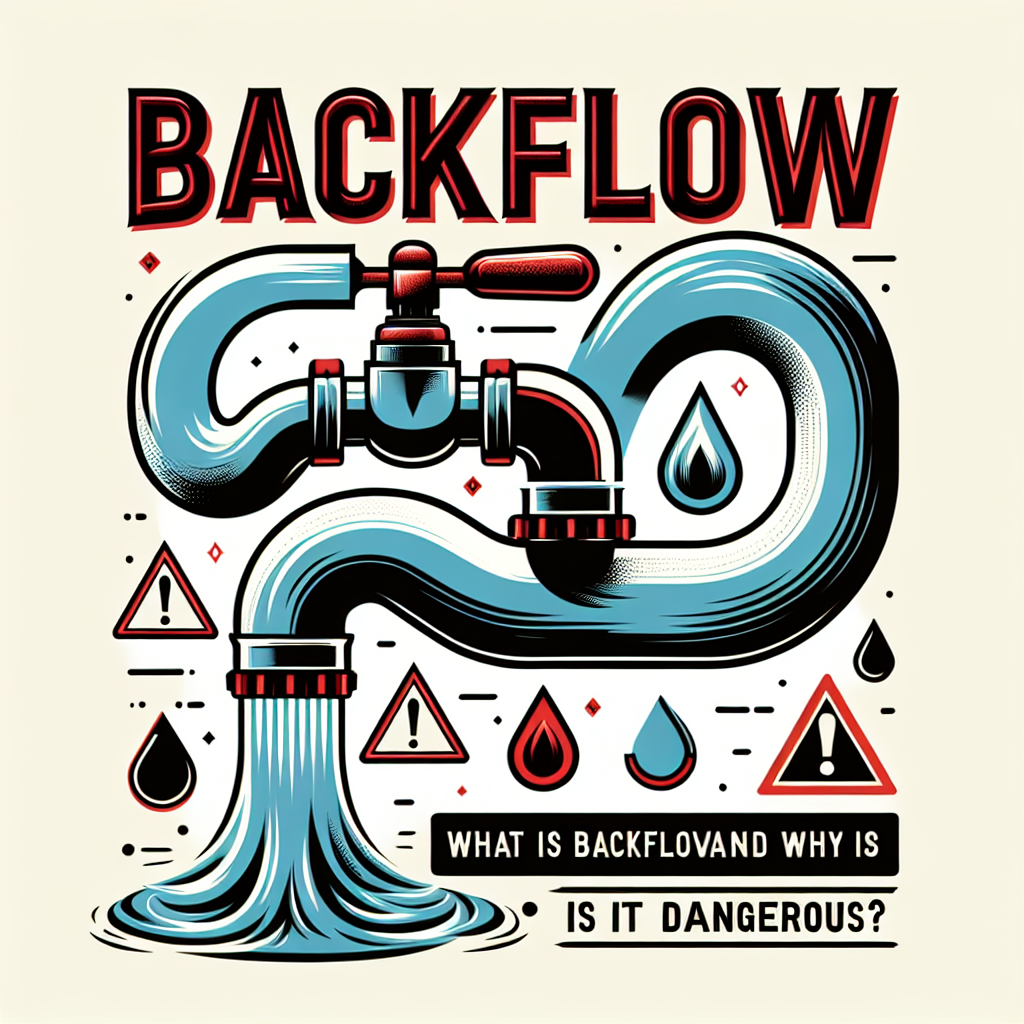Backflow is a term that often goes unnoticed until it causes serious problems. In simple terms, backflow refers to the unwanted reversal of the flow of water or other substances in a plumbing system. This phenomenon can lead to hazardous situations, particularly concerning drinking water safety. Understanding what backflow is and the dangers it poses is crucial for homeowners, business owners, and anyone concerned about public health.
Understanding Backflow
Backflow occurs when the normal flow of water in a plumbing system is disrupted, causing contaminated water to flow back into clean water supply lines. This reversal can happen due to various reasons, including:
-
Reduced Water Pressure: When the municipal water supply experiences a drop in pressure, such as during a failure or nearby firefighting efforts, backflow can occur as water seeks an alternative pathway.
-
Cross-Connections: Situations where potable water supply lines are intertwined with non-potable sources, such as irrigation systems or chemical storage, create a significant risk for backflow.
- Siphoning Effect: This is a natural phenomenon triggered when water in a container is lower than the water supply level, drawing water back into the contaminated source.
The Dangers of Backflow
1. Contaminated Water Supply
The most significant risk posed by backflow is the potential contamination of the potable water supply. When harmful substances—like pesticides, fertilizers, or sewage—enter the drinking water system, it can lead to serious health issues, including gastrointestinal illnesses and respiratory problems. Even small levels of contamination can be dangerous, especially for vulnerable groups such as children, the elderly, and individuals with weakened immune systems.
2. Legal Implications
Many municipalities have strict regulations regarding backflow prevention systems. Failure to comply with these regulations can lead to hefty fines and legal consequences for homeowners and businesses alike. Regular backflow testing and maintenance are not just smart practices; they are often mandated by law.
3. Damage to Plumbing Systems
Backflow can also cause physical damage to plumbing systems. Contaminated water can corrode pipes and fixtures over time, leading to costly repairs and replacements. Additionally, if backflow is not addressed promptly, it may result in extensive water damage within the property, which can require expensive remediation efforts.
How to Prevent Backflow
1. Install Backflow Prevention Devices
One of the most effective measures to prevent backflow is the installation of backflow prevention devices. These mechanisms, such as air gaps and check valves, are designed to ensure that water can only flow in one direction: from the potable supply into the home or business.
2. Regular Testing and Maintenance
Routine testing and maintenance of existing backflow prevention devices are essential. Homeowners and business owners should have their devices inspected at least once a year to ensure they are functioning correctly. Hiring a certified backflow tester is crucial for this process.
3. Educate Yourself and Others
Awareness is key! Educate your family, employees, or colleagues about the risks of backflow and the importance of prevention measures. Encourage reporting any unusual changes in water quality or pressure to the appropriate authorities.
Conclusion
Backflow is a hidden danger lurking in many plumbing systems, potentially jeopardizing the safety of our drinking water. Understanding what backflow is and the various risks it poses can help you take proactive steps to prevent it. By installing backflow prevention devices, committing to regular testing, and fostering awareness, we can collectively work toward a safer and healthier community. Don’t let backflow become a problem—take action today to safeguard your water supply!
FAQs About Backflow
Q: How can I tell if my home has a backflow problem?
A: Signs can include unusual changes in water pressure, cloudy or discolored water, or unexpected tastes or odors. If you notice any of these issues, consider contacting a plumber for an inspection.
Q: What types of properties require backflow prevention devices?
A: In general, commercial properties or any home with irrigation systems, swimming pools, or similar amenities are required to install backflow prevention devices. Check with local regulations for specific requirements.
Q: How can I find a certified backflow tester?
A: You can search online for certified plumbers in your area, or check with your local health department for recommended professionals specializing in backflow testing and prevention.
By understanding the importance of mitigating backflow risks, you can help protect both your health and your home. Let’s keep our water systems clean and safe for everyone!


